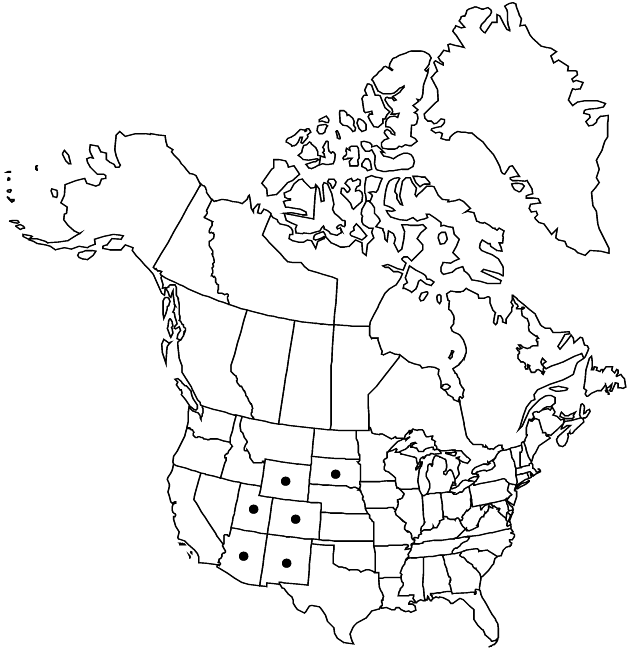Gnaphalium exilifolium
Bull. Torrey Bot. Club 29: 406. 1902.
Annuals, 3–15 (–25) cm; taprooted or fibrous-rooted. Stems commonly branched from bases, erect to ascending, tomentose. Leaf-blades linear, 0.4–5 cm × 0.5–3 mm. Bracts subtending heads linear, 10–25 × 0.5–1 mm, surpassing glomerules. Heads in spiciform glomerules (along distal 1/3–2/3 of main-stems, sometimes appearing loosely spiciform). Involucres 2.5–3.5 mm. Phyllaries brownish, bases woolly, inner narrowly triangular with whitish, acute apices. 2n = 14.
Phenology: Flowering Jul–Oct.
Habitat: Lake and pond margins, streamsides, seeps, moist meadows
Elevation: 1400–3000 m
Distribution

Ariz., Colo., N.Mex., S.Dak., Utah, Wyo., Mexico (Chihuahua)
Discussion
Gnaphalium exilifolium, a New World native, differs from the Old World G. uliginosum chiefly in its linear, slightly longer cauline leaves and bracts and in its spiciform arrangement of heads. Pistillate corollas of G. exilifolium are sometimes red-tipped. Cypselae of both taxa are variably smooth to papillate; local populations apparently are consistent in this feature; the variation is otherwise geographically inconsistent.
Selected References
None.